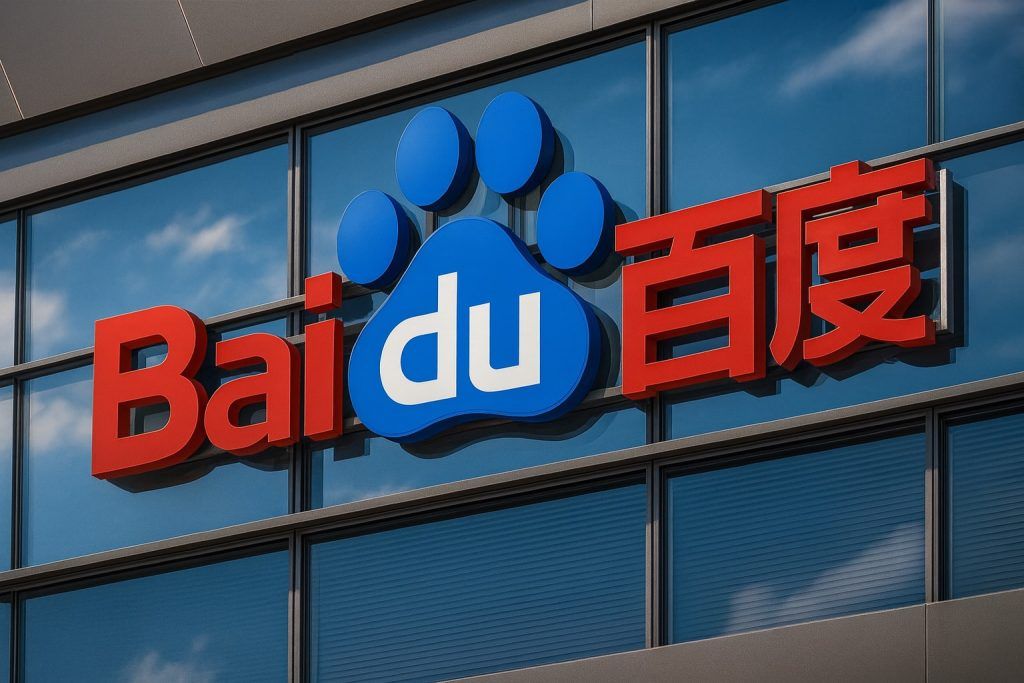On Tuesday, November 18, 2025, PDD Holdings Inc. (NASDAQ: PDD) — the Chinese e‑commerce group behind Pinduoduo and fast‑growing discount app Temu — is under pressure on Wall Street after posting third‑quarter 2025 results that combined strong profit growth with slowing revenue momentum and a cautious outlook. [1]
As of 16:15 UTC on November 18, PDD stock is trading around $120.60, down roughly 6.5% from the prior close near $129, making it one of the notable decliners on the Nasdaq today.
PDD stock price today (18 November 2025)
- Last price (intraday): ~$120.60
- Intraday high / low: $134.63 / $120.59
- Approximate one‑day move: about ‑6.5%
- Ticker: PDD
- Exchange: Nasdaq (U.S.)
The drop comes on a volatile day for U.S. equities overall, with major indices in the red as concerns about economic growth and tech valuations weigh on sentiment. But PDD’s move is clearly company‑specific, tied directly to its latest earnings report and management’s tone on the outlook, and the stock is also being flagged among the day’s key movers by multiple financial outlets. [2]
Q3 2025 results: strong earnings, slower revenue growth
PDD released its unaudited third‑quarter 2025 results before U.S. market open on November 18. Key headline numbers from the company’s official filing and press release: [3]
- Total revenue: RMB 108.28 billion (approx. US$15.21 billion)
- Up 9% year‑on‑year from RMB 99.35 billion
- Non‑GAAP diluted earnings per ADS:RMB 21.08 (US$ 2.96)
- Up from RMB 18.59 a year ago (mid‑teens percentage growth)
- GAAP diluted earnings per ADS: RMB 19.70 (US$ 2.77)
- Non‑GAAP net income attributable to shareholders:RMB 31.38 billion (US$ 4.41 billion), up 14% year‑on‑year
- Operating profit (GAAP): RMB 25.03 billion (US$ 3.52 billion), modestly higher than a year ago
- Cash, cash equivalents and short‑term investments: RMB 423.8 billion (about US$59.5 billion) as of September 30, 2025
In simple terms, profitability remains very strong and continues to grow at a double‑digit pace, while revenue growth has cooled to single digits compared with the explosive expansion PDD delivered during the peak Temu ramp‑up years. [4]
Did PDD “beat” or “miss” expectations? It depends who you ask
A big reason today’s headlines around PDD look contradictory (“beats expectations”, “misses expectations”, “mixed quarter”) is that different data providers are using different consensus estimates.
Here’s how major news and data sources are framing Q3 2025:
- Reuters reports that PDD’s adjusted EPS of 21.08 yuan came in well above an average analyst forecast of 16.84 yuan, while revenue of 108.28 billion yuan was fractionally below a consensus of 108.41 billion. [5]
- Zacks / Nasdaq similarly highlights an earnings beat, with adjusted EPS of US$2.96 vs. a consensus of US$2.21, and notes that revenue of US$15.21 billion missed their estimate by only about 0.01%. [6]
- TipRanks characterizes the report as “mixed”: EPS ahead of expectations, but revenue slightly under their compiled consensus of about US$15.38 billion. [7]
- Investing.com goes further, saying Pinduoduo “missed Q3 expectations,” citing a much higher revenue consensus of RMB 145.2 billion and EPS expectations of 23.50 yuan. That makes the delivered numbers look like a more significant miss, even though the underlying company data is the same. [8]
The takeaway:
- Earnings clearly beat most widely followed estimates.
- Revenue was very close to analyst expectations, but because the growth rate slowed to around 9%, some platforms and commentators are focusing on the deceleration rather than the small numerical miss. [9]
Why PDD stock is falling today
Despite the profit beat and still‑solid top‑line growth, PDD shares are sliding for several reasons that keep showing up across today’s coverage.
1. Revenue growth has moderated
PDD’s 9% revenue growth in Q3 represents a significant slowdown from the high double‑digit rates investors had grown used to during the early Temu expansion. Both the company and analysts describe this as “moderating” growth amid an increasingly competitive environment and external uncertainties. [10]
Discount‑driven campaigns, extended Singles’ Day promotions, and value‑oriented shopping habits in China did lift sales, but not to the levels seen in prior years. Reuters notes that Pinduoduo’s Singles’ Day sales grew about 11.7%, while Alibaba and JD.com posted growth in the high single digits. [11]
2. Management is openly warning about volatility and competition
On the earnings call and in today’s commentary, PDD’s leadership leaned heavily into a “long‑term, invest‑through‑volatility” message:
- Co‑CEO Jiazhen Zhao emphasized that industry peers have been deploying significant capital into new business models, intensifying competition, and said PDD will continue to invest in merchant support and platform upgrades even if that causes quarter‑to‑quarter financial fluctuations. [12]
- Vice President of Finance Jun Liu echoed that revenue growth has continued to moderate and cautioned that financial results may fluctuate as the company rolls out more merchant support initiatives and ecosystem investments. [13]
- Co‑CEO Chen Lei highlighted a “significant shift” in the global regulatory environment, especially for cross‑border e‑commerce, and warned that PDD will face greater challenges and uncertainties as trade barriers evolve. [14]
Investors often discount stocks when management stresses uncertainty and volatility, even if current‑quarter numbers are strong.
3. Cross‑border and regulatory headwinds for Temu
PDD’s global discount platform Temu has been one of the company’s biggest growth engines, but that business is now facing higher regulatory and cost headwinds:
- The United States has scrapped the duty‑free exemption that previously allowed low‑value parcels (under US$800) from China to enter the country without import duties, increasing costs for platforms like Temu and rival Shein. [15]
- The European Union is moving toward imposing duties on low‑priced cross‑border packages starting next year, further tightening the economics of ultra‑cheap shipments into Europe. [16]
- Temu was also recently cited by a French consumer watchdog for selling illicit products, adding to regulatory scrutiny. [17]
These developments don’t show up fully in Q3 numbers yet, but they weigh heavily on the forward outlook investors must price in today.
4. A rich run‑up met with “sell the news”
Before this report, PDD’s U.S.‑listed shares had gained roughly 30%+ year‑to‑date, according to Investor’s Business Daily, and were trading well above many historical levels. [18]
With expectations high and sentiment strong around Temu’s global expansion, even a slight revenue miss and a cautious tone can be enough for traders to hit the sell button — classic “sell the news” behavior after a run‑up. TipRanks notes that shares were already down nearly 4% in early trading following the release; intraday losses have since deepened toward the mid‑single‑digit range. [19]
How today’s PDD earnings are being framed across the Street
Different outlets are emphasizing different parts of the story, but a few consistent themes appear in today’s commentary:
- “Mixed but profitable” quarter:
- TipRanks describes the results as uneven, with earnings strength offset by softer‑than‑hoped revenue and a message of moderation rather than hyper‑growth. [20]
- Investor’s Business Daily highlights that PDD stock is falling after “mixed Q3 2025 results” and notes that the shares have slipped below key moving averages, suggesting technical weakness after a strong advance. [21]
- Profit beat, slight revenue miss:
- Nasdaq/Zacks underlines the 33%+ EPS beat versus its compiled consensus and describes the revenue miss as marginal, while also pointing out that PDD has now topped earnings expectations in three of the last four quarters. [22]
- Pressure from competition and uncertainty:
- StockTwits’ newswire and QuiverQuant both frame Q3 as a period of slower revenue growth amid competitive shifts and market uncertainty, while still calling out the double‑digit improvements in net income and operating profit. [23]
- Benzinga’s coverage zeroes in on management’s cautious posture, noting that PDD flagged slow growth and rising uncertainty and that the stock was recently trading around the mid‑$120s with a one‑day drop of about 3–4% at the time of their report. [24]
- Still generally constructive analyst stance:
- TipRanks data shows PDD with a “Moderate Buy” consensus rating from Wall Street, based on 13 recent analyst opinions (8 Buys and 5 Holds) and an average 12‑month price target around US$144–145, implying low‑double‑digit upside from levels referenced earlier in the day. [25]
- QuiverQuant’s aggregation of recent research points to multiple Buy or Overweight ratings and a cluster of price targets in the US$120–165 range from banks such as Benchmark, Barclays, and Bank of America. [26]
Business fundamentals: what’s happening inside PDD’s ecosystem?
Beyond the market reaction, today’s disclosures give a clearer picture of how PDD’s two main pillars — Pinduoduo in China and Temu abroad — are evolving.
Domestic platform: Pinduoduo and value‑driven Chinese consumers
Pinduoduo has built its brand around group buying, deep discounts, and agriculture‑focused commerce, making it a natural beneficiary of price‑sensitive behavior in a weak macro environment.
- PDD’s Q3 revenue increase was driven mostly by online marketing services and transaction services, each growing high single to low double digits year‑on‑year. [27]
- Heavy promotions around Singles’ Day lifted volumes, but analysts and PDD’s own finance team describe the overall sales environment as more subdued than prior years, as Chinese consumers remain cautious amid job worries and a fragile property market. [28]
The company is also sharply increasing R&D spending — up more than 40% year‑on‑year — as it invests in technology, logistics, and platform upgrades, which could support long‑term competitiveness but weighs on margins in the near term. [29]
International platform: Temu under a changing regulatory regime
Temu’s ultra‑low‑price, cross‑border model has been a major growth engine for PDD, but today’s commentary makes clear that the easy phase of global expansion is ending:
- Regulatory changes in the U.S. and planned EU duties on low‑value parcels are likely to raise costs per shipment, constraining Temu’s ability to subsidize prices as aggressively as before. [30]
- The platform is also seeing increasing scrutiny in key markets like Europe over product safety and compliance. [31]
PDD’s management suggests the company will keep leaning into merchant support and ecosystem investments to sustain long‑term growth, even if quarterly financial results become bumpier. That message is reassuring for those with a long horizon but unsettling for short‑term traders focused on quarter‑to‑quarter beats. [32]
What today means for PDD shareholders and watchers
From a news standpoint, November 18, 2025, is a turning‑point day for how the market thinks about PDD stock:
- The hyper‑growth Temu narrative is evolving into a more mature story centered on balancing profitability with regulatory and competitive headwinds.
- PDD remains highly profitable and cash‑rich, with billions in operating cash flow and one of the strongest balance sheets in Chinese e‑commerce. [33]
- Revenue growth is now clearly in the “moderating” camp, and management is signaling that investors should expect volatility — not a straight line — in the quarters ahead. [34]
For market participants tracking PDD Holdings stock, key things to watch after today include:
- How revenue growth trends over the next few quarters as PDD cycles past heavy promotional periods.
- The impact of U.S. and EU policy changes on Temu’s unit economics and pricing strategy.
- Whether PDD can maintain its margin profile while funding aggressive R&D and merchant support.
- Any shifts in analyst ratings and price targets following the Q3 print and today’s share price reaction.
Important note
This article is based on publicly available information from PDD Holdings’ official filings, press releases, and reputable financial news outlets as of November 18, 2025, and is intended for informational and news purposes only. It does not constitute investment advice, a recommendation to buy or sell any security, or a substitute for personal financial guidance.
References
1. www.globenewswire.com, 2. www.barrons.com, 3. www.globenewswire.com, 4. www.globenewswire.com, 5. www.reuters.com, 6. www.nasdaq.com, 7. www.tipranks.com, 8. www.investing.com, 9. www.reuters.com, 10. www.globenewswire.com, 11. www.reuters.com, 12. www.reuters.com, 13. www.quiverquant.com, 14. www.reuters.com, 15. www.reuters.com, 16. www.reuters.com, 17. www.reuters.com, 18. www.investors.com, 19. www.tipranks.com, 20. www.tipranks.com, 21. www.investors.com, 22. www.nasdaq.com, 23. stocktwits.com, 24. www.benzinga.com, 25. www.tipranks.com, 26. www.quiverquant.com, 27. www.globenewswire.com, 28. www.reuters.com, 29. www.globenewswire.com, 30. www.reuters.com, 31. www.reuters.com, 32. www.quiverquant.com, 33. www.globenewswire.com, 34. www.quiverquant.com







